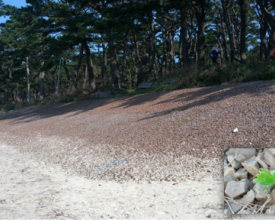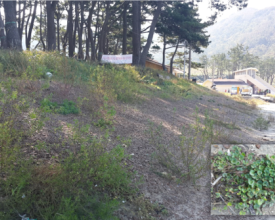
Biopolymère écologique pour la prévention durable de l'érosion côtière

Le Service des parcs nationaux de Corée (KNPS) a réussi à restaurer la côte érodée de l'île de Gwanmae-do, Jindo-gun, dans le parc national de Dadohaehaesang, grâce à une technologie respectueuse de l'environnement utilisant des matériaux de pavage naturels à base de biopolymères.
Les techniques actuelles de prévention de l'érosion côtière, qui utilisent des structures en béton de ciment ou des maçonneries en pierre naturelle, posent des problèmes physiques, tels que la dislocation et la fissuration au fil du temps après la construction. En outre, les structures en ciment perdent des substances toxiques qui détruisent l'écosystème environnant et affectent négativement les paysages voisins.
Un matériau de pavage naturel à base de biopolymères est un mélange de composés hautement moléculaires extraits de plantes et d'agrégats naturels tels que les graviers. Il contient de nombreux pores à la surface et à l'intérieur. Par conséquent, lorsqu'une forte vague frappe la surface, l'eau de mer est dispersée entre les pores, ce qui réduit considérablement l'énergie de la vague et augmente la durabilité de la structure.
Impacts
L'utilisation d'un matériau de pavage naturel à base de biopolymère est pilotée, testée et contrôlée par le parc national de Dadohaehaesang depuis octobre 2012. Le biopolymère durcit sous l'eau, ce qui a permis de consolider la construction. La résistance du matériau ne diminue pas, même lorsqu'il est exposé à l'eau de mer pendant une longue période et même à des typhons violents.
Les résultats de la surveillance des zones restaurées montrent que le sable s'est déposé entre les matériaux de pavage naturels et que diverses plantes vivant dans la dune de sable, telles que Calystegia soldanella, ont bien poussé, ce qui a permis de maintenir un paysage côtier naturel. L'effet de prévention de l'érosion a également été excellent et a même joué un rôle dans la protection de la forêt de Pinus thunbergii située à l'arrière de la côte.
Le KNPS continue à promouvoir les projets de restauration en utilisant une méthode écologique à base de biopolymères et prévoit d'étendre les projets de restauration écologique à d'autres zones telles que les sentiers.






